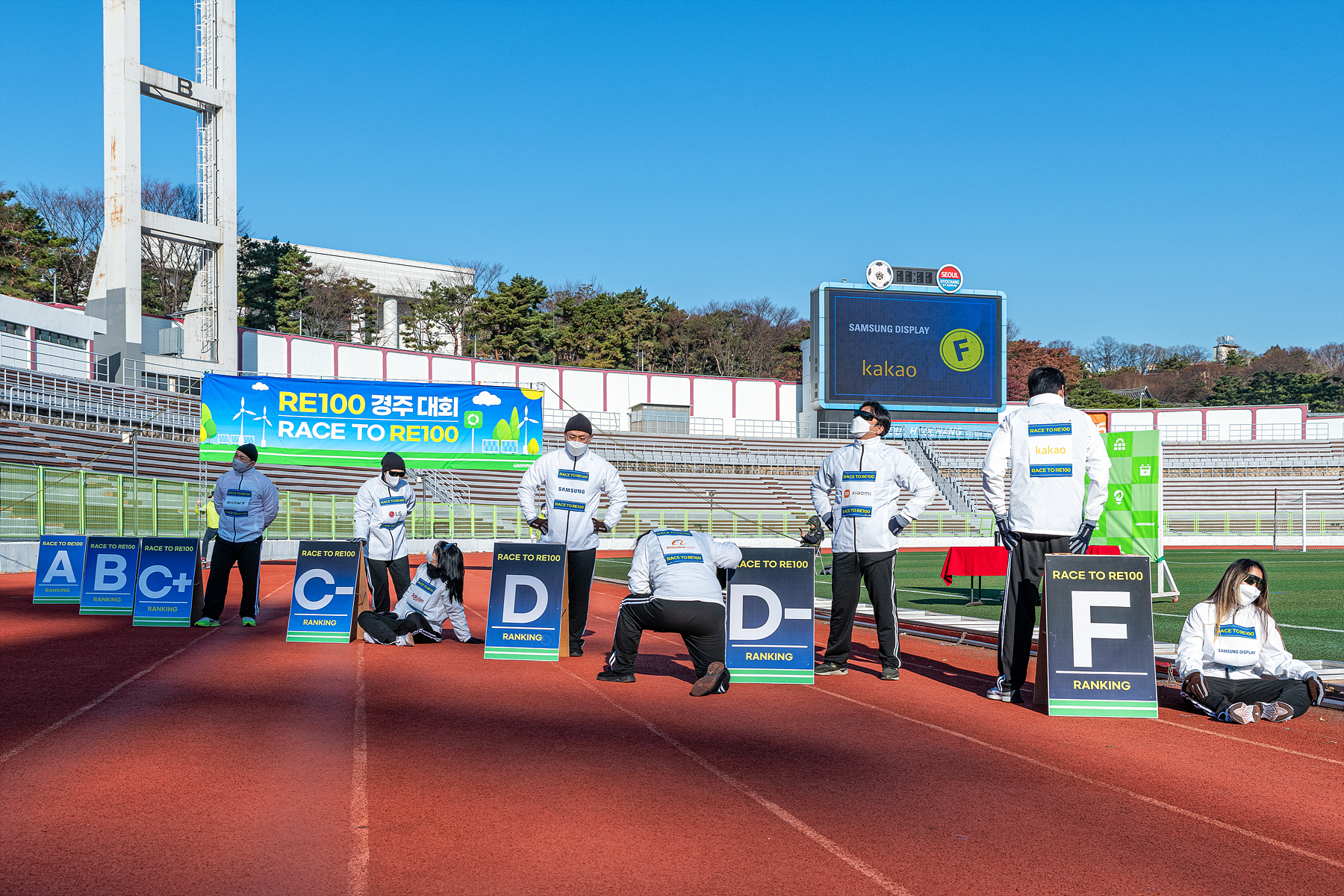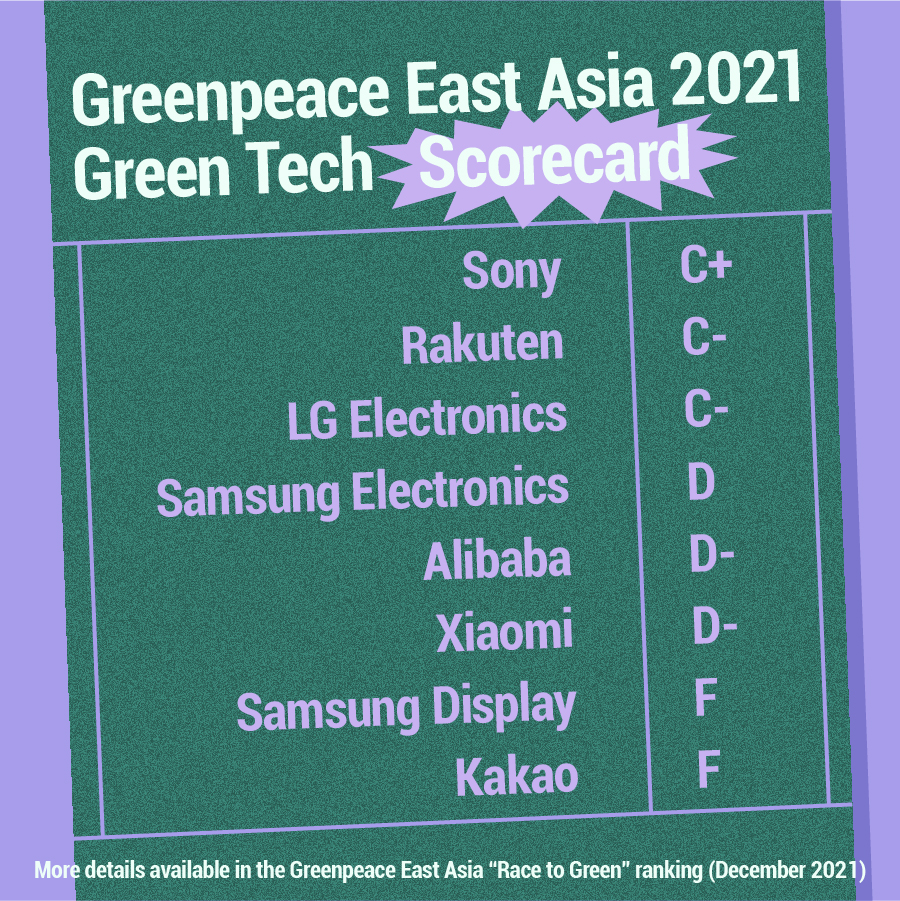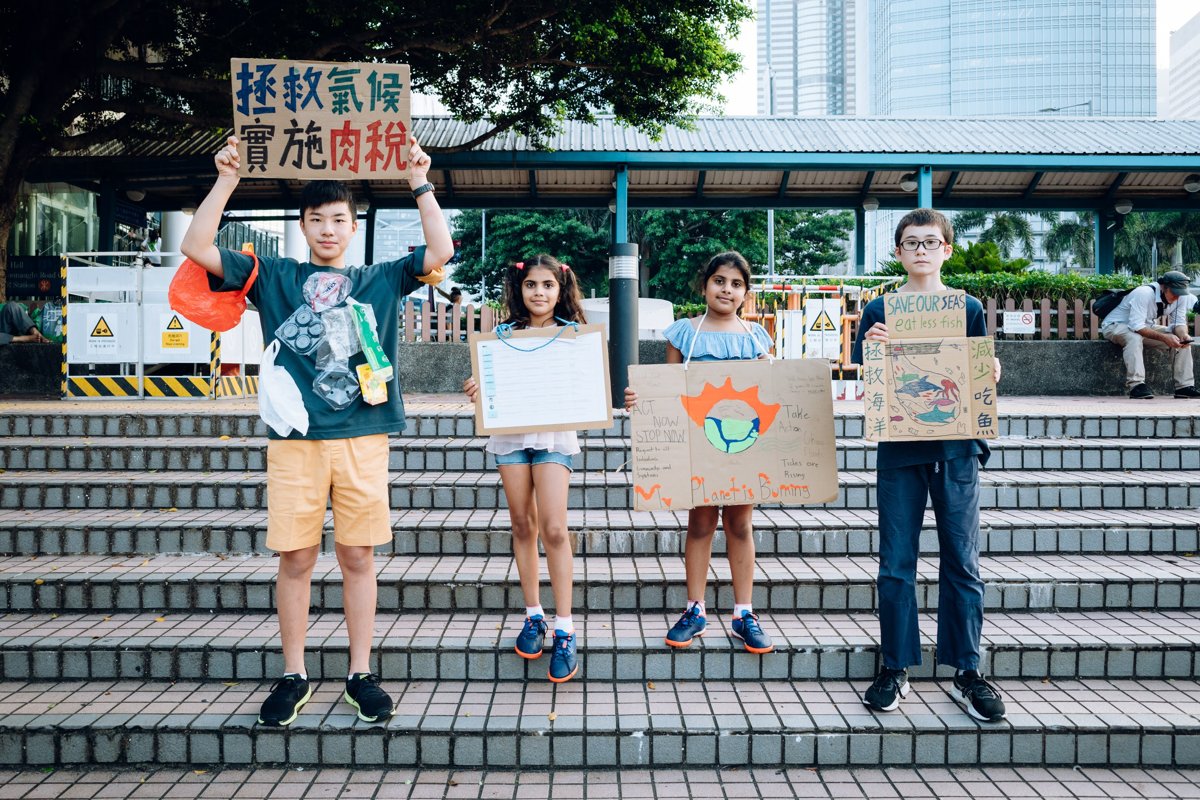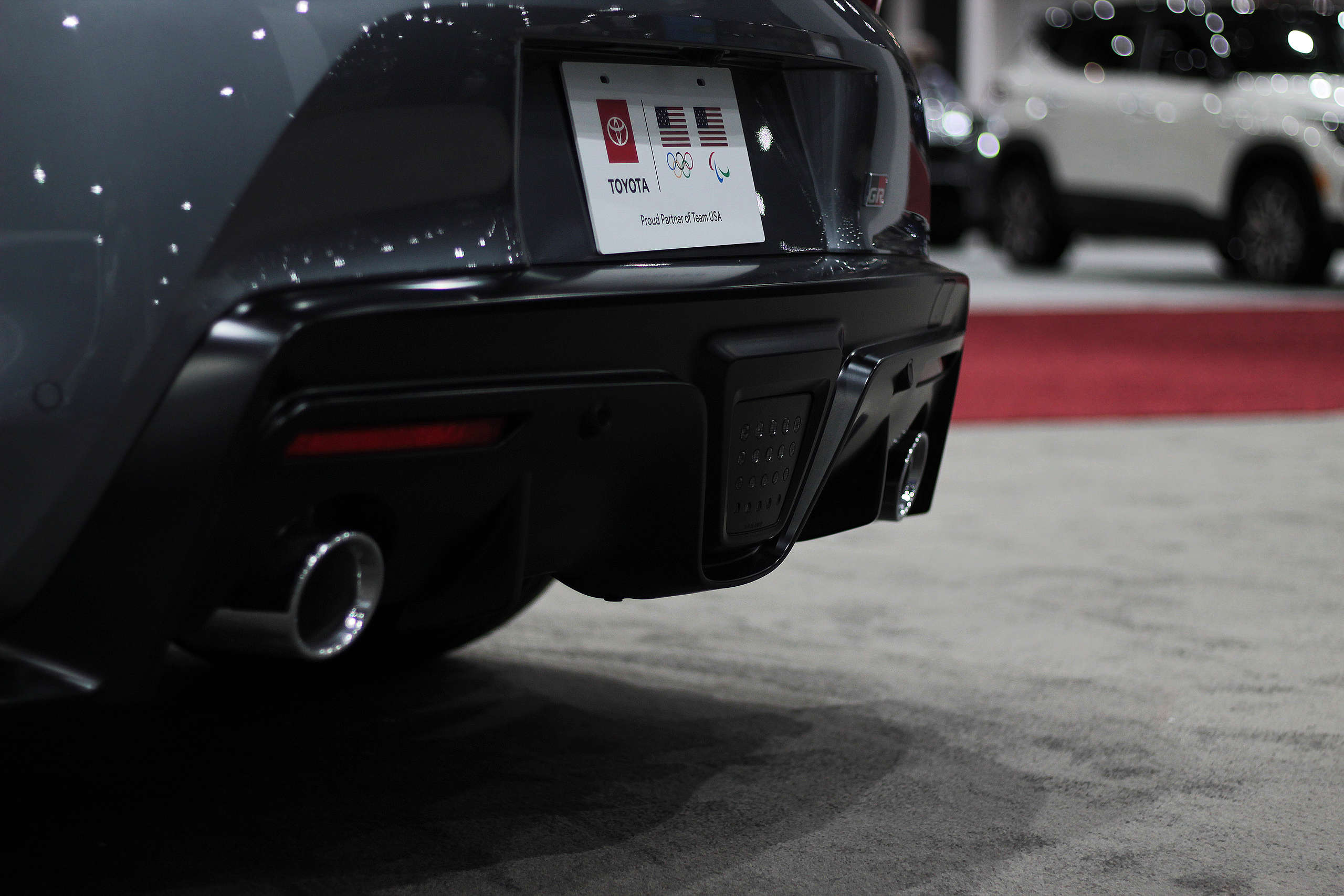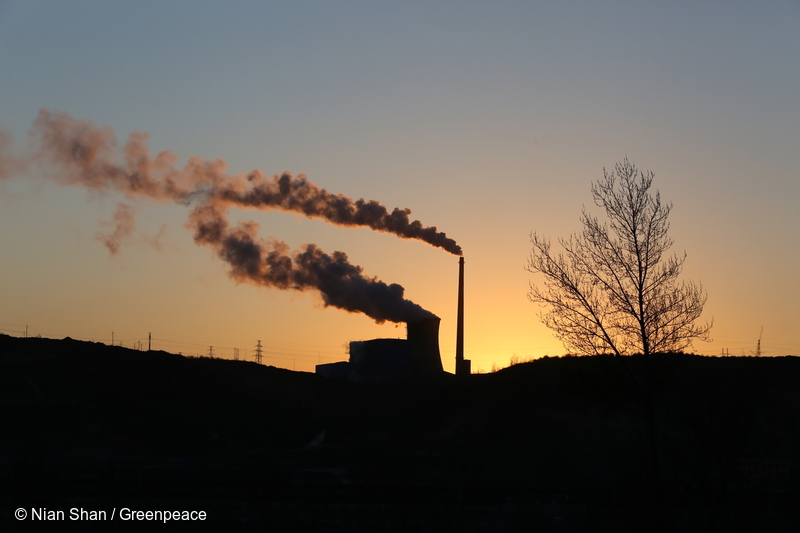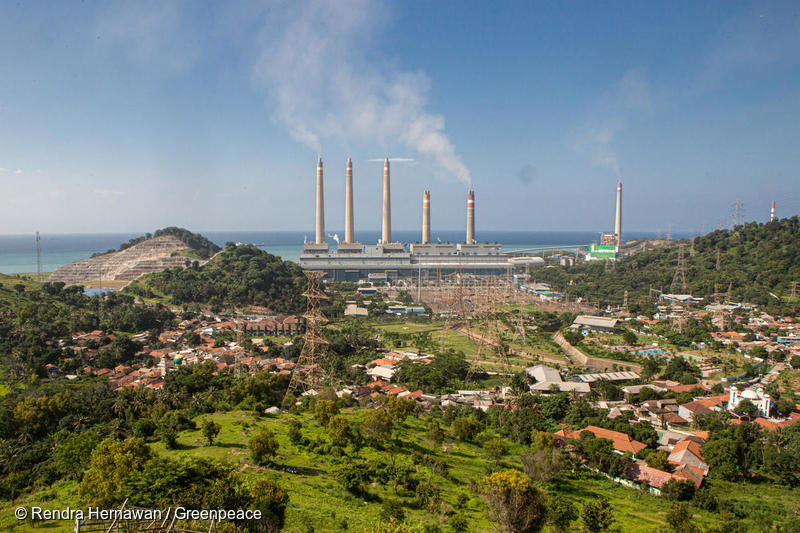-
Greenpeace calls for clear renewable energy targets in China’s overseas investment and aid
In Belt and Road countries, China’s public finance institutions could develop as much as 679.69 gigawatts (GW) of solar power and 26.55 GW of wind power by 2030, effectively cutting 1.8 billion tons of carbon emissions and creating 310,000 new jobs, new research from Greenpeace East Asia shows.
-
Why Samsung and Xiaomi Failed our Latest Green Tech Ranking
In our first ever regional tech ranking report, Race to Green, Greenpeace East Asia scored 30 of top tech companies in the region on their climate action and renewable energy use, and not a single one scored higher than a C+.
-
Samsung, Xiaomi get Failing Grades in New Greenpeace Tech Ranking
Sony received the top grade in Greenpeace East Asia’s first regional tech ranking, at a C+, illustrating how the tech industry still has a major task ahead to reduce its carbon emissions.
-
Let’s Talk About Climate Change: Who cares about COP26? 4 Young Climate Activists in Hong Kong Tell You More
Friday is the day when we are planning for weekend activities. Four teens aged from 8 to 15 however persistently spend their Fridays to spread the messages of climate crisis via their #FridaysForFuture actions. It has been 3 years since two of the teens have joined the cause. Have you ever realized you could help…
-
3 crucial things Toyota and the rest of the car industry must do for the climate now
The world’s top selling automakers are failing spectacularly to help save the climate. One of the biggest disappointments was Toyota. In a just-released report, Greenpeace East Asia looked at the commitments and actions of the top 10 automakers which represent 80% of the market and found that every single one of them is not doing…
-
Low carbon tips from Greenpeace’s “Coffee Meets Climate” Days
The Climate Crisis is affecting all of us, so everyone’s efforts matter in the face of climate change. Over 300 have joined our “Coffee Meets Climate” Event at Jao Tsung-I Academy, Hong Kong early October. Thank you all for taking part in the 2-day Greenpeace’s Low-Carbon Living Festival in which we exchange our learnings to…
-
In 2020, China’s “new infrastructure” emitted 7.24% less carbon than traditional infrastructure: Greenpeace
A new report from Greenpeace East Asia calculated emissions across China’s “new infrastructure” industries -- ranging from 5G, AI, and data infrastructure to electric vehicles, ultra-high voltage (UHV) power lines, and “smart” solution for cities, such as traffic and education -- and found that emissions in these industries are 7.24% less than in traditional infrastructure.
-
China pledges to stop building new coal overseas: Greenpeace response
In a speech at the United Nations General Assembly on Tuesday, China’s President Xi Jinping pledged that China will not build any new coal-fired power projects overseas.
-
The world’s top carmakers are holding us back on climate action–by violating CO2 regulations in certain markets
The climate crisis is making forests burn, temperatures soar, storms rage and floods engulf homes at a faster and harder rate than ever before. Never has it been more urgent to decarbonise than it is today. While countless efforts are being made to save our climate, the transportation sector - who is responsible for reducing…
-
Korea and Japan carmakers bet heavily on hydrogen vehicles to achieve carbon neutrality. Is it the right solution?
Korean and Japanese car companies are relying heavily on hydrogen vehicles, also known as fuel cell electric vehicles (FCEVs). However, various recent studies showed that FCEVs are a dangerous mistake that could deter us from decarbonizing in time to save our climate, due to how hydrogen is generated and the energy inefficiency of fuel cell…


